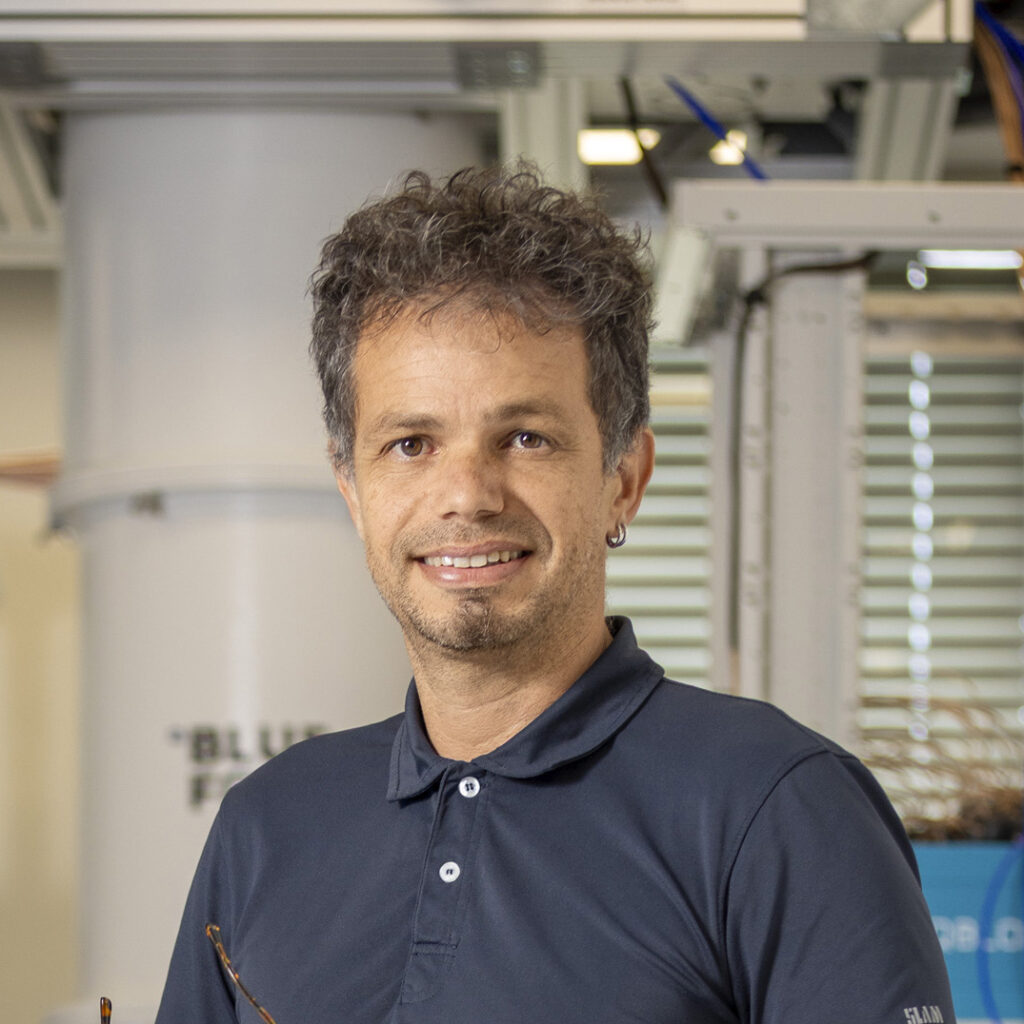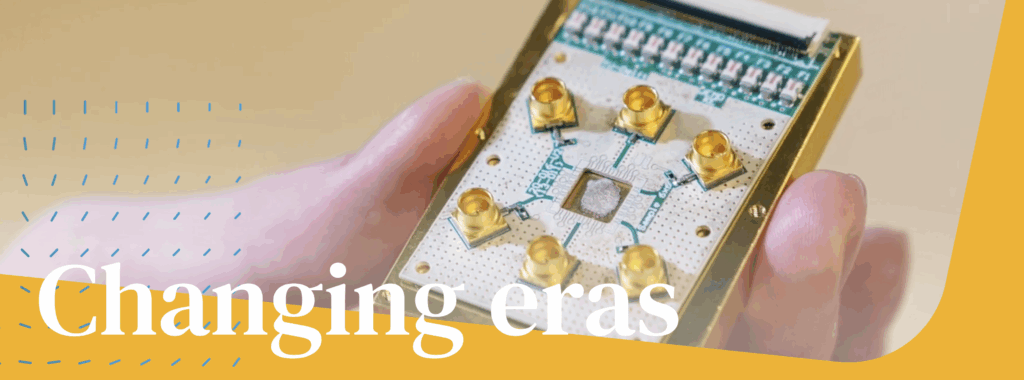09.07.2025Quantum Computing
Quantum-engineering of germanium for scaling quieter qubits
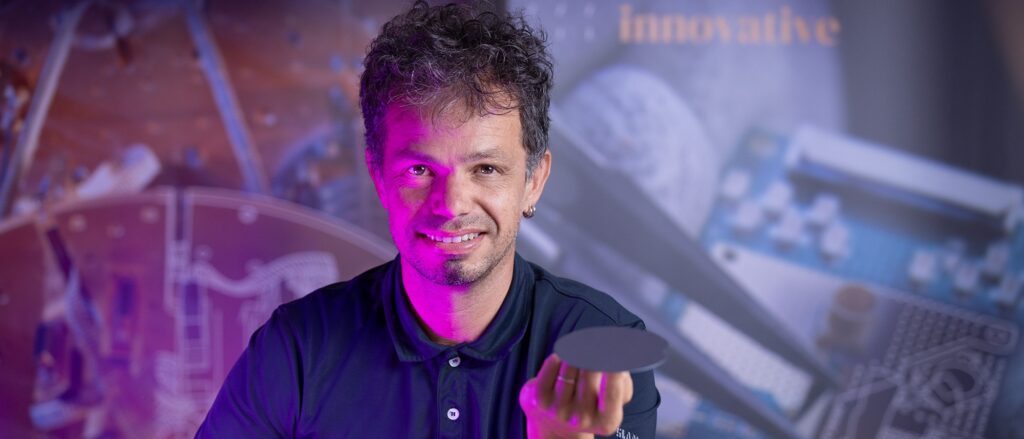
Reducing qubit noise remains a main challenge in furthering the field of quantum computing. Now researchers at QuTech have developed a novel way to create spin qubits in germanium that are not only quieter but also offer unique advantages for scaling. Semiconductor spin qubits are generally hosted on silicon wafers. This is well-suited for silicon qubits, but introduces several challenges for more promising germanium spin qubits. The new method to produce these germanium spin qubits, published in Nature Materials, is based on the use of germanium wafers and provides a stepping stone to scale up spin qubit devices with longer coherence times.
Current progress in semiconductor spin qubit systems has led to emerging proof-of-principle quantum processors with error rates below the 1% threshold required for quantum error correction. However, for future quantum computers to obtain a computational advantage over current devices, millions of highly coherent qubits will have to be integrated. A main challenge in scaling up current spin qubit systems beyond micron scale arises from disorder in the layers of different materials that host the qubits, as this introduces noise which disrupts quantum information processing.
“Our work demonstrates this new material platform may lead to better and more uniform qubit performance.” Giordano Scappucci
Now, researchers from QuTech led by Giordano Scappucci in collaboration with Francesco Borsoi, member of the Veldhorst Lab, have demonstrated that the current ‘golden standard’ – growing the material stack on a silicon substrate – may not be the best approach to scale devices and improve quantum performance. Instead, the researchers show that using a germanium substrate to grow a heterogeneous germanium/silicon germanium (Ge/SiGe) material stack leads to a calmer qubit noise environment. Scappucci: “We used germanium spin qubits as sensitive probes to measure the noise levels in the material stack and found a significant reduction when transitioning from a silicon to a germanium substrate. Our work demonstrates this new material platform may lead to better and more uniform qubit performance offering a promising path towards scalable quantum devices.”
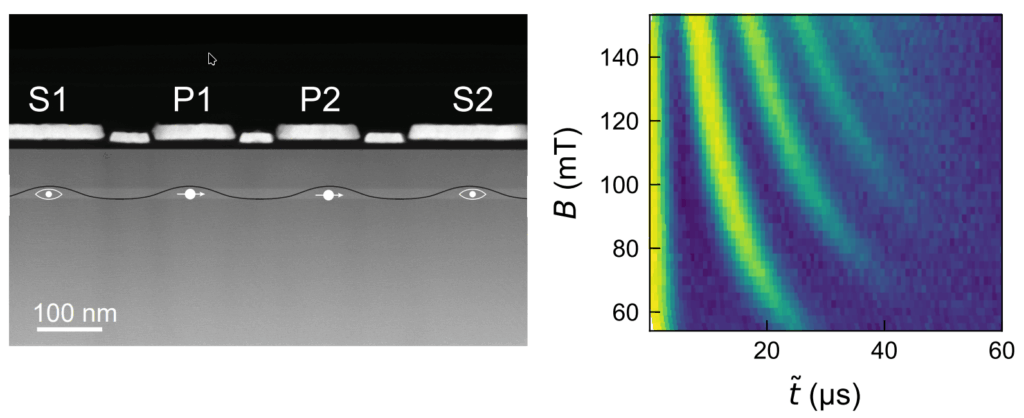
Right: one of the key results showing continuous collapse and revival of the qubit.
Less noise for scaling of spin qubits
For future quantum computers to achieve a realistic quantum advantage, qubits should maintain their quantum information for sufficiently long coherence times. “But qubits lose their quantum information, similar to a soap bell bursting, when distorted by noise”, Borsoi explains. When growing a heterogeneous material stack of thin crystalline layers, disorder emerges in all forms and shapes. A few examples are impurities, the absence of atoms, nuclear spins and trap states at the oxide interface – which trap and release charge creating fluctuating electric fields. Each of these effects can modify the electrostatic environment surrounding the qubits, creating decoherence channels.
To maintain their quantum information, connected spin qubit systems require electrostatic uniformity. For this, Ge/SiGe heterostructures have recently been developed at QuTech with exceptionally low disorder – by using germanium wafers as substrates instead of silicon. “Building further on this, we now fabricated complex micron-scale devices using this material and assessed the noise properties by using qubits in germanium quantum wells”, Scappucci explains. “We probed the material in multiple places using several qubits and discovered that the use of germanium substrates decreases noise.”
Epitaxial growth on germanium
The researchers grew the heterogeneous Ge/SiGe material stack on a germanium substrate using epitaxy. With this technique, thin crystalline layers are formed on top of each other having an order defined by the crystalline substrate on which it is grown. “Using this process, we grow a Ge layer which has proven to be ideal to host spin qubits as it creates the right potential trap for quantum wells in which the qubits sit”, Scappucci explains.
The reason why germanium substrates lead to less noise in comparison to silicon substrates has to do with the lattice parameter of both materials. “Our qubits live in strained germanium layers. There, the lattice parameter is slightly smaller than germanium substrates but much larger than silicon substrates”, adds Stehouwer, PhD candidate in the Scappucci group. “This larger lattice mismatch results in more dislocations in the stack if you start from a silicon substrate”
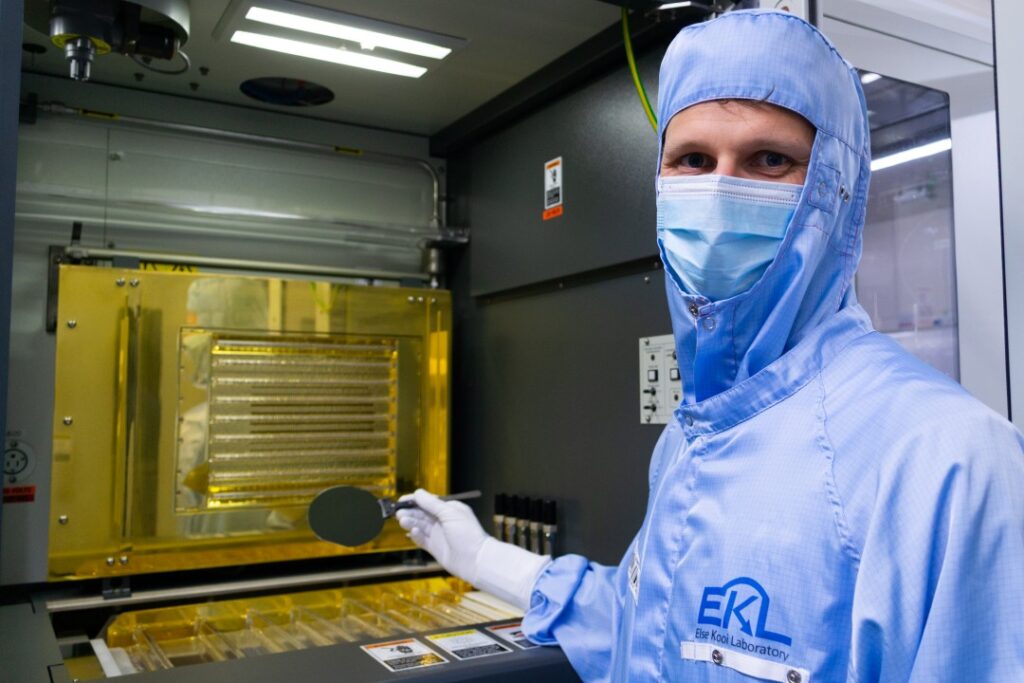
Cleaning and preparing the surface of the germanium wafers for epitaxy proved to be slightly more complicated, as they do not have an oxide layer on top to protect them, something that silicon wafers do have. Stehouwer: “Growing devices on a germanium substrate did not form a big challenge, still we are the only researchers who are currently doing it.”
Stimulating the industry
While many industries make use of germanium – for example in solar cells, body temperature scanners, optical fibers and detectors with a high X-ray resolution used in astronomy – the current quantum industry does not. Instead, it focuses on silicon wafers: a material well known to conventional chip foundries, and still suitable for scaling of qubits centered around the use of silicon.
“This work can stimulate the industry to find new ways to integrate germanium on silicon in order to recreate the conditions of germanium wafers.” Giordano Scappucci
“Still, our results demonstrate that germanium wafers seem a more natural choice for low noise spin qubits”, Scappucci explains. “This work can stimulate the industry to find new ways to integrate germanium on silicon in order to recreate the conditions of germanium wafers.”
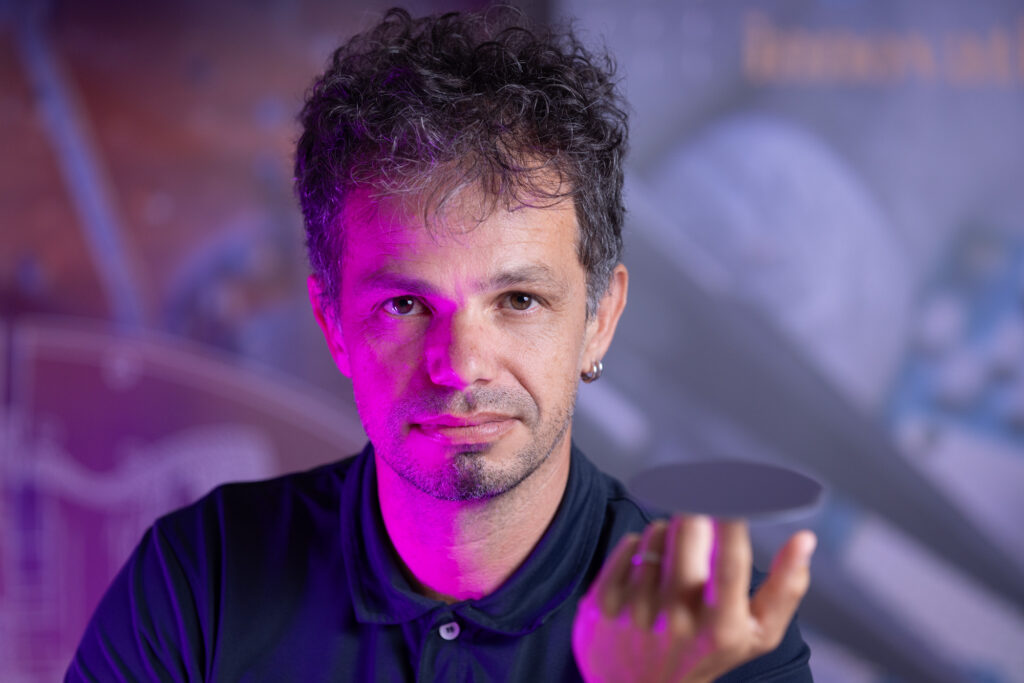
Quiet, spin-free materials for long-lived qubits
The ability to connect material properties to spin qubit metrics represents a formidable starting point to progress in the field. Scappucci: “We have shown that the lifetime of our qubits – the timescale after which we lose the encoded information – is consistent with the noise levels measured directly on the material.” Borsoi also notes that: “We also understood information-loss features that are more subtle to understand, and that relates to information loss due to the interaction with the free spins of the surrounding nuclei, both in silicon and in germanium.”
The researchers look ahead to the next step. By purifying the material systems from such nuclei spins, they expect a further increase in the qubit quality, with a corresponding lifetime approaching the millisecond.

